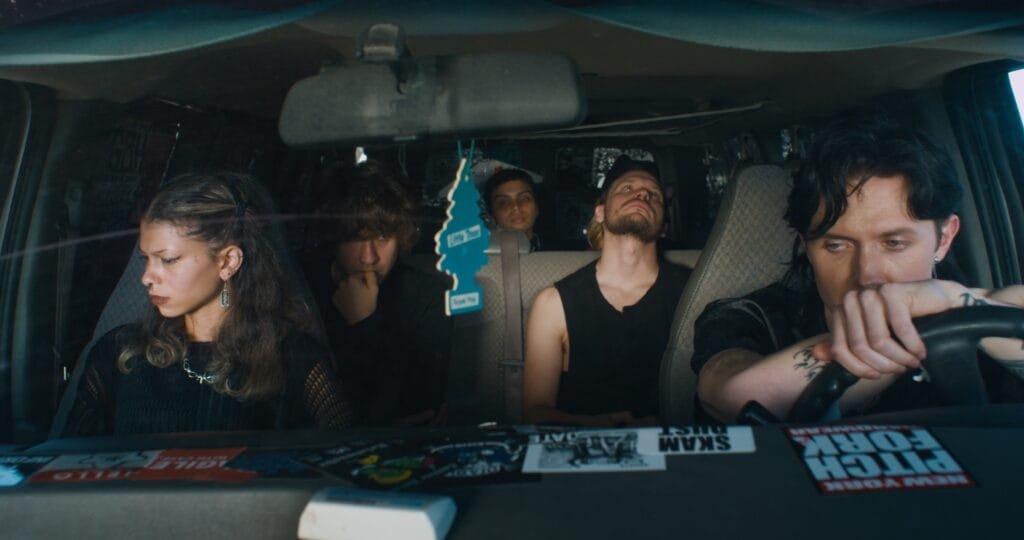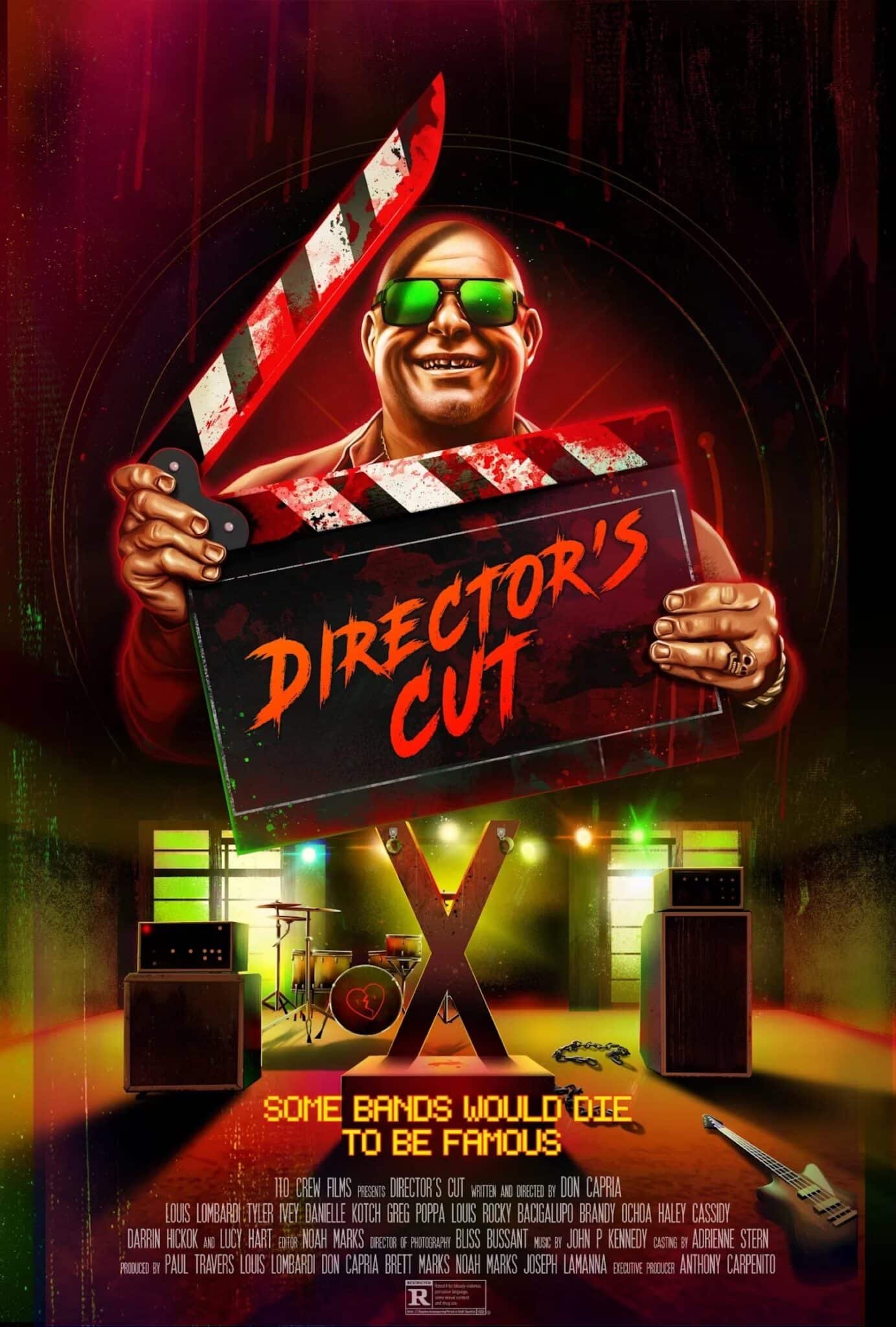
Who’d be in a rock band these days? Not only do you have to contend with the sheer impossibility of making a living whilst you balance your social media profile against diminishing Spotify returns, but you may even find yourself in a horror film. Consider the surfeit of recent cinematic evidence – some good, some bad. Which brings us to Director’s Cut (2014), a feature about shooting a music video directed by a guy – Don Capria – who has made a couple of music videos himself. Sadly, that insider knowledge doesn’t bring anything transformative or particularly successful to this project, in which an emo-ish band called The Suicide Disease has disappeared, after posting one last Instagram photo (which is a fate which will surely happen to a lot of people; one’s always gonna be the last). We backfill a little, finding out that the band is broke and in crisis after a controversial fan death both crippled their passion for the project and mired them in controversy. Money’s tight: they have to decide whether to write more material, play live again, or go make a music video with the mysterious unknown who is offering to direct it for free, via their DMs.
Jay (Tyler Ivey), who has a lot of tattoos and so is clearly the frontman, has the final say – and we already know what he’ll choose. They seal the deal with a video call with the director, or ‘Mr. Director’ to give him his full name (Louis Lombardi). Mr. Director – who looks like he’s about to offer them a side quest in GTA – explains that he has short-term access to a cool abandoned mansion, but they have to be quick if they want the shoot. The band therefore heads to rural Pennsylvania to meet him, taking a couple of girlfriends with them. The girls, by the by, seem petulant and bored, which is a great moment of verisimilitude in an otherwise unlikely set-up.
As they make their way to their destination, they pass a few possible sources of horror: there’s the rolling, deserted road; the pick-up truck which stops, menacingly; a mysterious churchyard; some potentially dangerous locals, signposted by their cut-off shirtsleeves. Then, when they get to the mansion itself – remote, but filled with state-of-the-art surveillance cameras with an off-limits basement, things could yet go in a few different directions. It could be a home invasion of sorts, or a supernatural horror. Or, it could be a kind of ordeal horror, but that would mean that Mr. Director is as straightforwardly dubious as he seems to be, alongside his assistant, Babs (porn star Lucy Hart, whose penis is, for some mystifying reason, on screen a lot of the time).
The chosen answer, when it comes, is by far the least surprising and imaginative, as well as the one which stretches the film’s limited budget the most in terms of lighting, framing and SFX. Yep, Capria has selected the ordeal horror/slasher-ish route, and as such the same plot point unfolds for each band member in an almost interminable sequence – repetitive, and an odd fit for the time we’re still spending with Jay – Jay, with his practiced emo angst, an angst so strong that it even repels a BJ, albeit one from his angry new girlfriend, Jen (Haley Cassidy), whom we’ve already seen needlessly hammering a horn. Risk is everywhere.
Until its close – though the film’s runtime is at least modest at eighty-five minutes or thereabouts – Director’s Cut struggles with forward momentum. Things look up briefly when there purports to be a twist, but it’s not substantial enough to reinvigorate proceedings, nor to add greater depth to what we’ve witnessed up until this point. This is all compounded, unfortunately, with other snags and errors. The use of caricatures and the issues with pace, however, derive chiefly from the script, which desperately needed a re-read; whenever characters start talking about social media, there’s a risk it’ll sound peculiar and unrealistic, and that is an issue here – alongside some laboured metaphors and verb choices (surely no one ‘co-signs’ things as much as we hear about here). As such, there are a lot of issues. However, the locations are great, look good on camera, and are used well. Part of the horror, too, stems from the stresses and strains of trying to make a living from music, which to some degree excuses why the band doesn’t just leave when things start to go sour: people are desperate, maybe even desperate enough for this.
Slasher or slasher-ish fans who enjoy the set pieces and are happy enough with a loose framing device may have enough fun with this one to have a good time, and I hope so – it feels like a shame that this one doesn’t work for me, and a bit of a missed opportunity, but this may not be the case for all audiences. If you love truly independent cinema enough to overlook the issues, take a look: it’s out on VOD now following its Halloween release.
